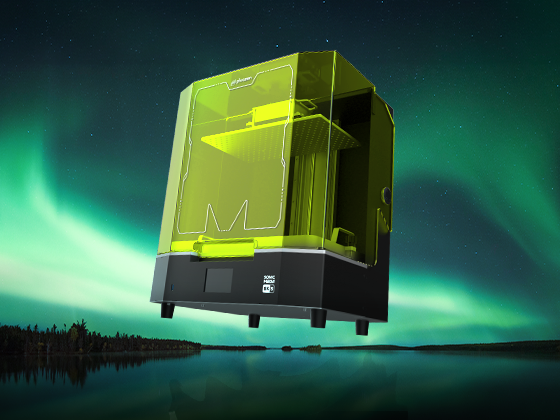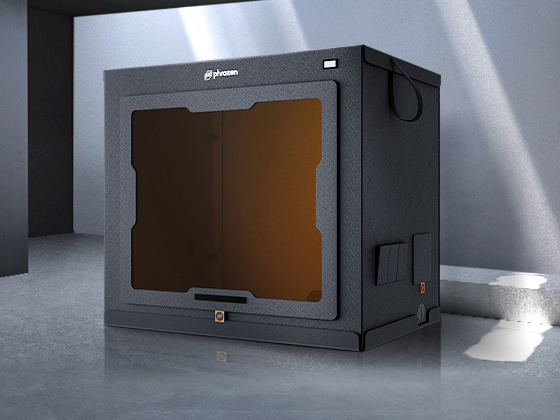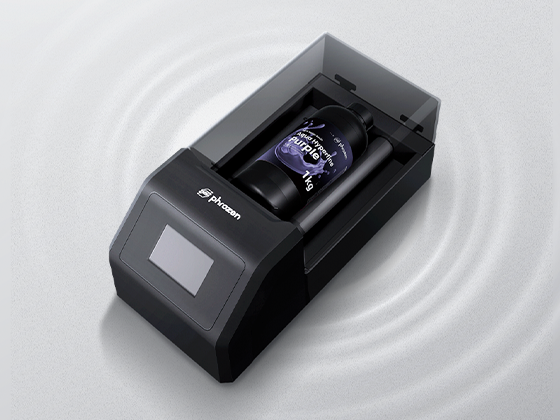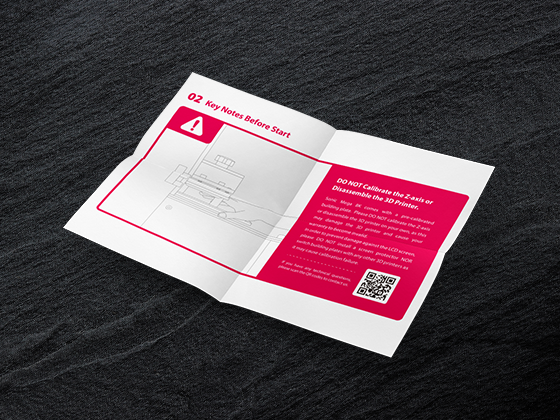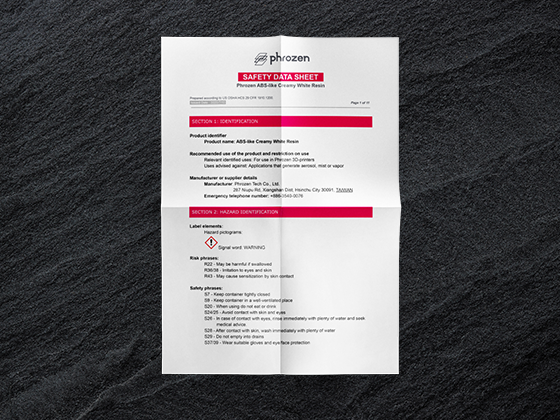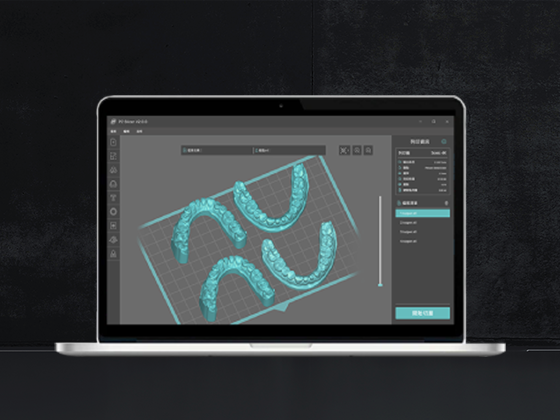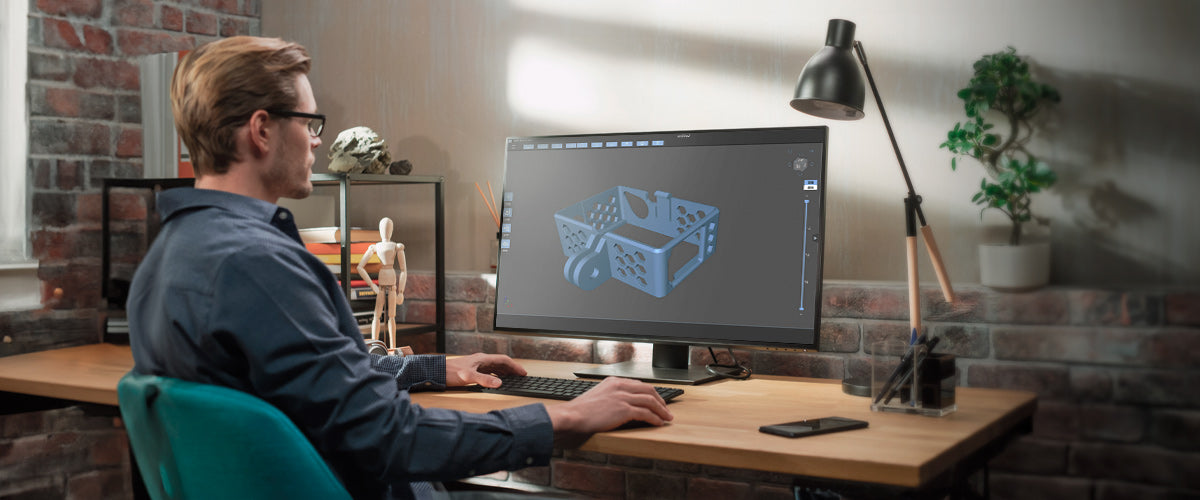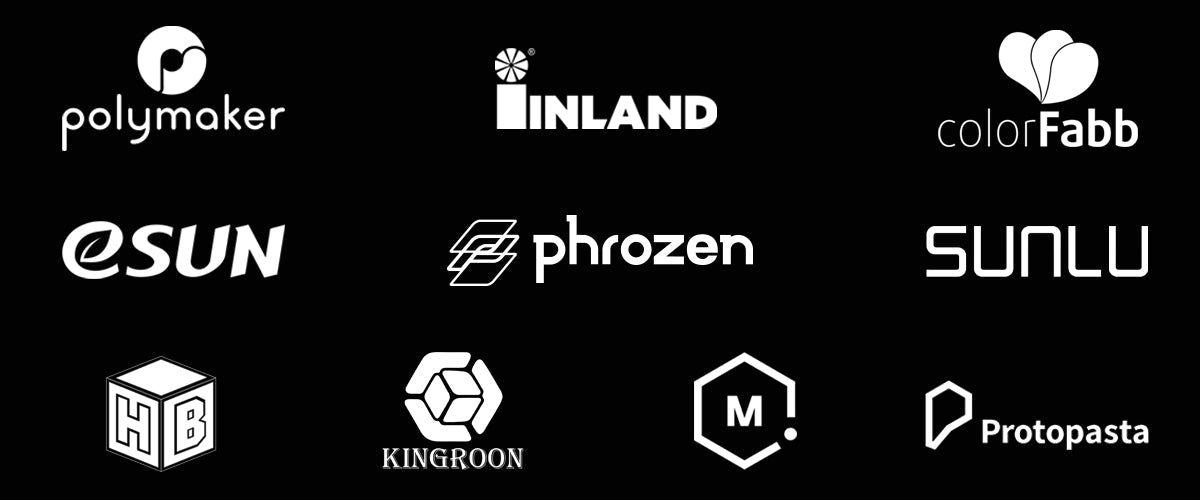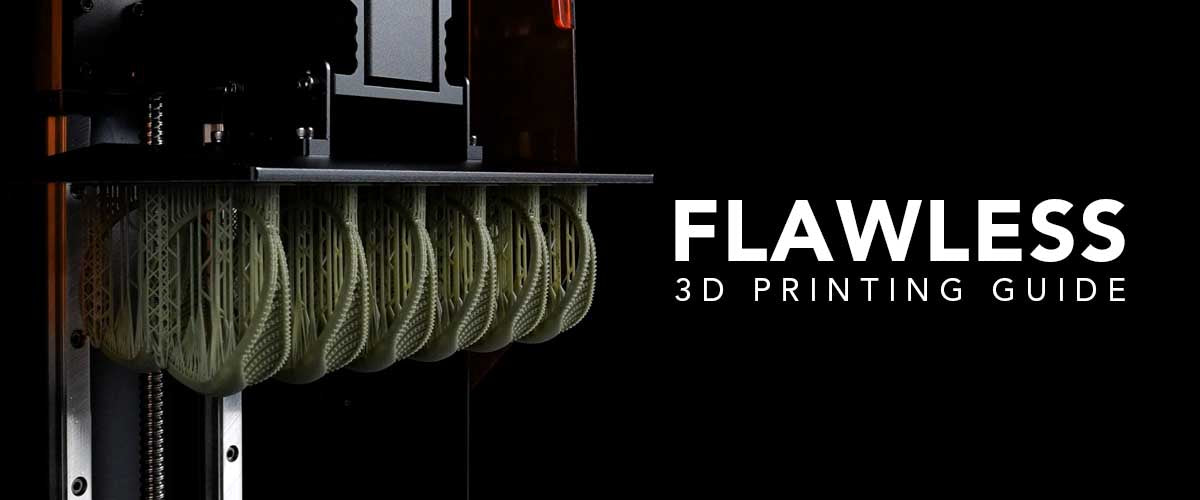Imagine you’ve just downloaded a highly detailed 3D model for a project you’re working on. It’s exactly what you were looking for—except for a few small issues.
Maybe the model is too large for your printer, or perhaps it has some defects that could ruin the final print. Worse, it might be missing crucial features that would make it perfect for your needs. The frustration is real, but there’s good news: you don’t need to start from scratch.
With the right free STL editor, you can quickly and easily make the necessary adjustments to your 3D models. Whether you need to resize, repair, or completely overhaul an STL file, there are powerful tools available that won’t cost you a dime.
This guide is here to help you navigate through the top free STL editors of 2024, ensuring you find the perfect solution for your 3D printing projects.
And if you’re considering investing in a new 3D printer to complement your editing tools, Phrozen 3D printers offer a wide range of high-quality options that are perfect for both beginners and professionals alike.
What is an STL File?
Before we dive into the best free STL editors, it’s important to understand the basics of what an STL file is and why it’s so integral to 3D printing.
Definition and Origin
STL stands for STereoLithography, a file format originally developed by 3D Systems in the 1980s. It was designed for use in CAD software to create 3D models, particularly for stereolithography machines.
Today, STL files have become the standard file format used across the 3D printing industry, from hobbyist projects to industrial manufacturing.
How STL Files Work
An STL file describes the surface geometry of a 3D object using a mesh of interconnected triangles. Each triangle is defined by three vertices and a normal vector, which indicates the direction of the triangle’s surface.
The simplicity of this format makes it widely compatible with various 3D printers and software, but it also has limitations. For example, STL files do not contain any information about color, texture, or other metadata. This can be a drawback if you need to include these details in your 3D prints.
For a wide selection of STL files to suit various needs, explore PIXUP. You can also read our blog on websites that offer free 3D print models to explore other alternatives to download 3D models for your projects without needing to pull out your credit card.
The Importance of STL Files in 3D Printing
Due to their widespread use and simplicity, STL files are the go-to format for most 3D printing tasks. When you download a model from an online repository or create one using CAD software, it’s usually in STL format.
However, the simplicity that makes STL files so popular also means they often need to be edited before printing. This is where a reliable free STL editor becomes invaluable, allowing you to tweak the model to your exact specifications.
If you’re new to 3D printing and still figuring out what printer suits your needs, check out this 3D printer buying guide to help you make an informed decision.
Why You Need an STL File Editor
3D printing isn’t always as straightforward as downloading a file and hitting “print.” Often, the STL files you download or create need some degree of customization or repair to meet your specific needs. Here’s why a free STL editor is an essential tool in your 3D printing toolkit:
Customization
Not every STL file you find online will perfectly match your requirements. Maybe the model is too large for your printer’s build volume, or perhaps it’s missing a key feature you need for your project. With a program to edit STL files, you can resize models, add or remove features, and adjust the geometry to ensure the final print meets your expectations.
- Example: Imagine you’ve found a great model of a phone stand, but it doesn’t have a slot for a charging cable. Using a free STL editor, you can add this feature, making the stand more functional.
Repairing Files
STL files downloaded from the internet are not always perfect. They can have issues such as holes, non-manifold edges, inverted normals, or overlapping faces. These defects can cause printing errors, leading to wasted time and materials. A good free STL editor allows you to identify and fix these issues, ensuring your prints come out flawlessly.
- Example: If your model has non-manifold edges (where two edges don’t connect properly), a free STL editor can repair these, making the model printable.
And if you’re experiencing issues like warping, layer shifting, or other common printing problems, it might be helpful to check out this comprehensive guide on resin print failures to troubleshoot and resolve these challenges.
Optimization
Sometimes, a model is perfectly fine in terms of design, but it’s not optimized for printing. Maybe it has too much detail, leading to unnecessarily long print times, or perhaps it’s solid when it could be hollow to save material. A free STL file editor lets you optimize your models, making them more efficient to print.
- Example: You could use an STL editor to hollow out a solid figurine, reducing material usage and print time while maintaining the model’s external appearance.
Types of STL Editors
There’s no one-size-fits-all when it comes to STL editors. The right tool depends on what you need to accomplish and your level of expertise. Here’s a breakdown of the different types of STL editors available:
CAD-Based Editors
CAD (Computer-Aided Design) tools are powerful software applications that allow users to create and modify solid 3D models with precise measurements and geometric constraints. These tools are often used by engineers, architects, and designers who need exact control over their models.
- Strengths: CAD-based editors are excellent for making precise modifications, such as resizing parts to exact dimensions, adding mechanical features like screw holes, or making structural changes that require high accuracy.
- Weaknesses: These tools are generally not designed for editing STL files directly. Instead, they’re better suited for creating models from scratch or making modifications to parametric designs. They also tend to have a steeper learning curve compared to other types of editors.
Examples: FreeCAD, Fusion 360
Mesh-Based Editors
Mesh-based editors are specifically designed for manipulating the surface geometry of 3D models. They allow you to work directly with the triangles that make up an STL file, making them ideal for tasks like sculpting, smoothing, and repairing complex surfaces.
- Strengths: Mesh-based editors excel at detailed editing, allowing you to sculpt and fine-tune models with a high degree of precision. They are also better equipped to handle complex tasks like repairing damaged meshes and optimizing models for 3D printing.
- Weaknesses: These tools can be more difficult to use for precise geometric operations, like adding exact mechanical features. They’re also more focused on artistic modeling, which may not be suitable for all applications.
Examples: Blender, MeshMixer, MeshLab
Browser-Based vs. Desktop Software
When choosing an STL editor, you’ll also need to decide between browser-based tools and desktop software.
- Browser-Based Tools: These tools are accessible from any device with an internet connection, making them incredibly convenient for quick edits. They’re often simpler and easier to use, making them a great choice for beginners or casual users.
- Strengths: No installation required, accessible from anywhere, and generally easier to learn.
- Weaknesses: Limited in features compared to desktop software, may require an internet connection to use.
- Examples: TinkerCAD, SculptGL
- Desktop Software: These tools are more powerful and offer a wider range of features, making them ideal for more complex or professional work. They require installation and may have steeper learning curves, but they provide more control over your editing tasks.
- Strengths: More features and power, better for complex tasks, and doesn’t require an internet connection once installed.
- Weaknesses: Requires installation, can be more difficult to learn, and is less accessible from multiple devices.
- Examples: Blender, FreeCAD, MeshLab
There are tons of STL file editors and sites to download 3D models. Consider reading our blog on the top 10 websites to download free 3D print models if you're looking for STL files to download and edit.
Plus, if you're looking for the most popular 3D models in the market, you must read our popular blog on cool 3D prints. Its a comprehensive list of the most unique, cool, and in-demand 3D models that you'll love to 3D print.
Top 10 Free STL Editors for 2024
Here’s where we dive deep into the best free STL editors available in 2024. We’ve chosen tools that cater to a wide range of users, from beginners to advanced professionals, ensuring that there’s something for everyone.
Blender

Blender is an open-source powerhouse that’s widely used across various industries, from animation to game design, and of course, 3D printing. As a free STL editor, Blender offers unparalleled flexibility and a vast array of features, making it ideal for both intricate sculpting and simple repairs.
Key Features:- Advanced sculpting tools for detailed modifications.
- Comprehensive suite for mesh editing, including Boolean operations, decimation, and more.
- Add-ons like the "3D Print Toolbox" that help identify and fix common printing issues.
- Highly versatile, suitable for nearly any 3D modeling task.
- Regular updates and a large community for support.
- Extensive online tutorials and resources.
- Steep learning curve, especially for beginners.
- Requires a powerful computer, particularly for high-poly models.
Best For: Users looking for a powerful, all-in-one tool capable of handling everything from minor edits to complex sculpting.
FreeCAD

FreeCAD is a parametric 3D CAD modeler that’s particularly popular among engineers and architects. It’s designed for precise geometric modeling and is an excellent program to edit STL files when you need to make exact modifications.
Key Features:- Parametric modeling allows you to modify your design easily by going back into your model history.
- Wide range of plugins and extensions, including those for mesh editing.
- Ability to convert meshes into solid models, which can then be edited using traditional CAD tools.
- Excellent for precise mechanical designs.
- Open-source with a strong community and plenty of tutorials.
- Supports a wide variety of file formats, making it versatile beyond STL editing.
- Not as intuitive for beginners.
- Limited in sculpting capabilities compared to mesh-based editors.
Best For: Engineers, architects, and advanced users who need precise control over their models.
MeshLab

MeshLab is an open-source system for processing and editing 3D triangular meshes. It’s one of the most powerful free STL editors available, especially when it comes to handling large or complex files.
Key Features:- Advanced mesh processing tools, including cleaning, remeshing, and surface reconstruction.
- Capable of handling and processing very large mesh files.
- Wide array of filters for analyzing and repairing meshes.
- Extremely powerful for mesh analysis and repair.
- Supports a variety of file formats beyond STL.
- Open-source with ongoing development and community support.
- Steep learning curve and less intuitive interface.
- Not suitable for creating models from scratch.
MeshMixer

MeshMixer, developed by Autodesk, is a favorite among hobbyists and professionals alike for its ease of use and powerful features. This free STL editor is perfect for quick modifications, repairs, and even preparing models for 3D printing.
Key Features:- Intuitive interface with drag-and-drop simplicity.
- Built-in tools for mesh repair, including hole filling, smoothing, and stability analysis.
- Integration with other Autodesk products and services, including Fusion 360.
- User-friendly, making it accessible for beginners.
- Powerful mesh repair tools that make preparing models for printing easy.
- Free to use, with a large community and plenty of resources.
- No longer being actively developed, meaning future updates are unlikely.
- Less suitable for detailed sculpting or complex design tasks.
SketchUp

SketchUp, once owned by Google and now by Trimble, is known for its ease of use and accessibility. While it’s primarily a CAD tool for architectural design, it can also serve as a free STL file editor with the right plugins.
Key Features:- User-friendly interface, great for beginners.
- Extensive library of plugins, including those for STL import/export and editing.
- Cloud-based version available, making it accessible from any device.
- Easy to learn, with a simple and intuitive interface.
- Large community with plenty of resources and tutorials.
- Supports both beginners and professionals with different versions (Free and Pro).
- Limited to basic STL editing tasks unless you use plugins.
- Not suitable for high-detail sculpting or complex repairs.
Best For: Architects, designers, and beginners who need a simple tool for basic 3D modeling and STL editing.
SculptGL

SculptGL is a lightweight, browser-based sculpting tool that’s perfect for quick edits and basic sculpting tasks. It’s a great free STL editor for those who want to dip their toes into 3D modeling without downloading any software.
Key Features:- Basic sculpting tools accessible directly in your web browser.
- Supports STL, OBJ, and PLY file formats.
- Symmetry mode, which is useful for creating balanced models.
- No installation required, making it accessible from any device with a browser.
- Simple and easy to use, perfect for beginners.
- Ideal for quick edits and basic sculpting tasks.
- Limited features compared to more robust desktop software.
- Can create non-manifold vertices, which may require additional repair in another tool.
Best For: Beginners or users who need a quick, lightweight tool for basic STL edits and sculpting.
TinkerCAD

TinkerCAD is another browser-based tool developed by Autodesk, designed to be extremely user-friendly. This free STL editor is especially popular in educational settings and among hobbyists who need to create or modify simple 3D models.
Key Features:- Drag-and-drop interface with a library of basic shapes.
- Simple tools for resizing, rotating, and combining models.
- Integrated with Autodesk’s other tools, making it easy to export models for further refinement.
- Extremely easy to use, even for young learners.
- Cloud-based, so no installation is required.
- Large community and plenty of resources for beginners.
- Limited in scope; not suitable for complex models or detailed editing.
- Lacks advanced features found in desktop software.
Best For: Beginners, educators, and hobbyists looking for a simple, no-fuss tool to create and edit STL files.
3D Slash

3D Slash is a unique free STL editor that takes a block-based approach to 3D modeling, reminiscent of Minecraft. It’s a fun and intuitive tool that’s great for beginners who want to create or modify simple models.
Key Features:- Block-based modeling, which is easy to grasp for users of all ages.
- Ability to edit STL files by adding or removing blocks.
- Available both online and as a downloadable desktop application.
- Very easy to use, making it accessible for beginners and children.
- Fun, game-like interface that simplifies 3D modeling.
- Free version available with all basic features needed for simple edits.
- Limited to block-based modeling, which isn’t suitable for more complex or detailed designs.
- Lacks the precision and advanced features of more traditional STL editors.
Best For: Beginners, children, and hobbyists who enjoy a more playful approach to 3D modeling.
Fusion 360

Fusion 360, another powerful tool from Autodesk, is a cloud-based 3D CAD, CAM, and CAE tool that’s free for students, hobbyists, and startups. It’s an advanced program to edit STL files, offering a comprehensive suite of features for professional-grade modeling and design.
Key Features:- Integrated CAD, CAM, and CAE tools in one platform.
- Advanced mesh editing capabilities, including tools for repairing, scaling, and smoothing STL files.
- Cloud-based collaboration, allowing multiple users to work on the same project simultaneously.
- Extremely powerful, suitable for professional-grade projects.
- Free for hobbyists, students, and startups.
- Regular updates and strong community support.
- Complex interface with a steep learning curve.
- Requires a constant internet connection for cloud-based features.
Best For: Advanced users, professionals, and startups who need a robust, all-in-one tool for design and engineering.
Creality Print

Creality Print is specifically designed for users of Creality 3D printers. This free STL editor is tailored to work seamlessly with Creality hardware, offering a straightforward interface and all the basic tools you need to prepare models for printing.
Key Features:- Integrated slicer for preparing models for 3D printing.
- Tools for scaling, rotating, and repairing STL files.
- Pre-configured settings optimized for Creality 3D printers.
- Perfectly optimized for Creality hardware, ensuring compatibility and ease of use.
- Simple, intuitive interface that’s great for beginners.
- Free to use, with regular updates from Creality.
- Limited in features compared to more general-purpose STL editors.
- Not suitable for non-Creality printers or more advanced editing tasks.
Best For: Creality 3D printer users who need a simple, integrated tool for preparing STL files for printing.
How to Choose the Right STL Editor
With so many options available, how do you choose the right free STL editor for your needs? Here are some tips to help you make the right decision:
Consider Your Experience Level
-
Beginners: If you’re new to 3D modeling and printing, start with a tool that has a gentle learning curve. TinkerCAD, 3D Slash, and SculptGL are all great options for beginners who need something easy to pick up and use.
-
Intermediate Users: If you have some experience with 3D modeling but aren’t yet a pro, consider tools like MeshMixer or SketchUp. These tools offer more advanced features without being too overwhelming.
-
Advanced Users: For those who need professional-grade tools with advanced features, Blender, FreeCAD, and Fusion 360 are the way to go. These tools offer unparalleled power and flexibility but may require significant time to master.
Read our blog on how to create 3d models for a comprehensive guide on 3D modeling. It's a must read before you start designing 3D prints.
Identify Your Specific Needs
-
Sculpting and Detailed Edits: If your focus is on fine details, sculpting, or organic shapes, a mesh-based editor like Blender or SculptGL is your best bet.
-
Precision and Mechanical Design: For projects that require precise measurements and structural integrity, CAD-based tools like FreeCAD and Fusion 360 are ideal.
-
Quick Fixes and Simple Edits: If you need to make quick adjustments or repairs, tools like MeshMixer and TinkerCAD are perfect for getting the job done efficiently.
System Requirements and Accessibility
-
Browser-Based Tools: If you prefer not to install software or need something accessible from multiple devices, go for browser-based options like TinkerCAD or SculptGL.
-
Desktop Software: For more power and a wider range of features, desktop software like Blender, FreeCAD, and MeshLab offer the best performance, especially for more complex tasks.
Conclusion
Choosing the right free STL editor can make a huge difference in your 3D printing projects. Whether you’re a beginner looking to get started or a professional in need of advanced tools, there’s an editor on this list that’s perfect for you.
From quick fixes to detailed sculpting, these editors provide everything you need to take your 3D models to the next level. Don’t be afraid to experiment with a few different tools to find the one that fits your workflow best.
And if you’re considering upgrading your 3D printer, check out the Phrozen 3D printers. Known for their reliability and high-quality prints, they could be the perfect addition to your setup.


